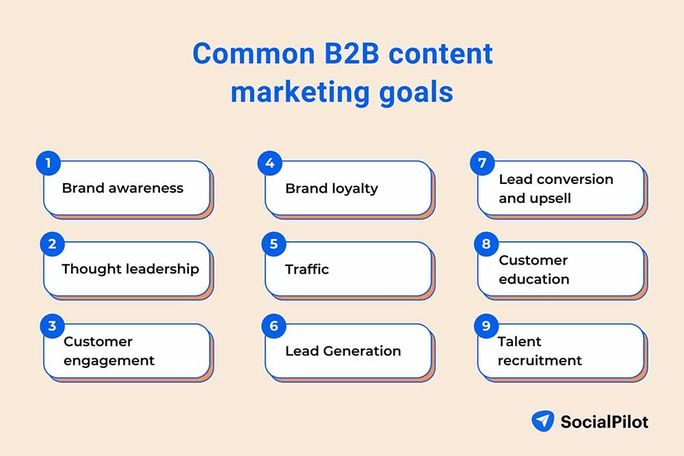
First, we should note the institutionalization and growth of social media. Like the Mad Men series, social media has become part of our lives and, for many, an integral part of advertising. And, like Mad Men, organizations that want to sell will not let go of it. Likewise, new social media sites with new features will keep popping up, and organizations that want to control content will push those fringe sites to the extreme. Let's face it, how can we manage the myriad of social media sites.
Theory of customer engagement
Social media has seen a lot of popularity in recent years. This presents new opportunities for marketers to increase customer engagement. The cognitive, emotional, and behavioral components of the concept have been the foundations of the concept. Social media marketing is a way to increase customer loyalty and brand equity by engaging customers in value-adding processes. This article will focus on the three key components of customer involvement and their role in social-media marketing.
Economic benefits. These benefits have made social media an increasingly popular medium for consumers engagement. This can increase brand loyalty and drive sales growth. But, social media is not a replacement for traditional advertising. Social media makes this channel accessible to more consumers than ever. Brands should consider including social media in their marketing plans, even though there are many. Marketers can reach the right people by combining these two types of engagement.

Social media's impact on CRM
There is increasing research about the benefits of brand communities, brand engagement on CRM and brand communities. However, it remains unclear how this affects customer relationships and overall costs of a company's businesses. In this study, researchers analyze the impact of social media interactions on customer churn, upselling behavior, and service contact behavior, and examine the profitability of such activities. The study offers companies some guidance.
Social media has made it possible for people to interact with brands in a new way. In the past, people engaged in traditional marketing strategies, which required a large upfront financial investment. Today, billions of people communicate directly or through different communities. Many of these platforms were created when they were still young, while others have been around since childhood. This new wave of customers has pushed brands to create deeper customer relationships. As a result, social media is now influencing CRM and marketing.
Social media trends
The 2018 social media marketing trends were numerous. Facebook has made changes to their algorithm that will affect the way business websites appear on users' news feeds. Instagram and Snapchat launched their own mobile app, IGTV, which users can access from iOS and Android devices. These trends have both changed the landscape of social media and marketers need to keep up to date to ensure their campaigns remain relevant to their audience and products.
Videos are the most used form of social media marketing. They are easy to upload on the many platforms. Videos allow for a more interactive way to share information. You can even add sound effects. Another popular trend is live content. It is especially popular among millennials. Engage with your customers live to demonstrate authenticity and build trust. This is particularly important if your goal is to improve the credibility of your brand.

Marketer has many tools at his disposal
One of the most popular tools for social media marketers is Everypost. Everypost makes it easy to schedule posts and manage multiple accounts. You can also analyze posts from competitors and plan similar content for your company's social media accounts. Other great tools include Agorapulse CRM, which tracks interactions and engagements across social networks.
Socialinsider – This is an analytics and benchmarking tool that will help you analyze and track your social media metrics. It lets you add your company's logo and customize reports so you can see how your social media activities are performing. It can be used to measure the success of your campaign, without you having to spend hours creating reports. The best part is that you can try it free for seven days.
FAQ
How does Content Marketing Strategy help me?
Content Marketing Strategy gives access to data you might not otherwise be able to. This data allows you to measure which types of content perform better than others.
It allows you to identify the most effective strategies to drive more visitors to your site. And it provides insight into your audience's behavior so that you can develop even better content.
This allows you to focus on the good content and less worrying about whether it works.
The Content Marketing Strategy helps you identify the messages that resonate with your audience.
You can find out their preferred content by analysing these messages. This will allow you to create similar pieces of content, and help keep your ideas alive.
Finally, a Content Marketing Strategy helps you track your content's performance. You will see which content types are performing better as you share more.
In summary, a Content Marketing Strategy will ensure that your content performs to its potential.
Can I do my content marketing by myself or with a team?
The answer to this question depends on your budget, skill set, and experience. If you don’t have enough resources to hire someone for content creation, distribution, optimization, and maintenance tasks, you’ll need to learn how it’s done yourself.
You should not attempt content marketing without support.
A good content strategist or agency can save you time and money while helping you get results faster.
You can't achieve success unless you work hard, produce high-quality content, and keep up with current trends. That's why having a solid content strategy in place is vital.
Content marketing requires a large budget.
It all depends upon the size of your company and where you are at. Small businesses often start with no dedicated resources. As they grow, small businesses realize the importance of a solid content marketing strategy to increase sales and customer engagement.
Working with a freelance writer and content marketing agency will allow you to access a wide variety of tools as well as expert knowledge. These professionals can help you identify the problems and opportunities in your company to guide your content marketing plan.
A good content marketing strategy will give you enough money to cover production costs while allowing you to invest in other parts of your business.
How long does it take to get started in content marketing?
It depends on how large your business is. Smaller companies usually don't have enough resources to invest in content marketing immediately. If you're willing and able to work hard, however, it can make a huge difference.
Statistics
- An example of an overarching goal could be: "In 2022, we want to achieve a 20% increase in revenue created by organic content and generate 15,000 MQLs with a budget of $30,000." (semrush.com)
- We found that 40% of businesses don't have a documented strategy yet. (semrush.com)
- According to our research, brand awareness, attracting traffic, and generating leads remain the key content marketing goals in 2022. (semrush.com)
- Seventy-two percent business to business (B2B) (mailchimp.com)
- Out of the 1,500 marketers we surveyed for our State of Content Marketing report, 78% who felt their content marketing strategy was exceptionally effective in 2021 had documented their strategy. (semrush.com)
- In fact, would pay more for a better customer experience, and 86% of B2B buyers would pay more. (neilpatel.com)
- This marketing strategy landed Ford a 15.4% conversion rate. (neilpatel.com)
- According to research compiled by Coschedule: Companies that publish 16+ blog posts a month get as much as 3.5x as much traffic as those that publish 0-4 posts a month. (criteo.com)
External Links
How To
How do we create content marketing strategies?
The first step is understanding what kind of content you want to create for your clients. Once this is done, it's now time to create content. This may mean developing an editorial calendar and planning where these pieces will come from. Content should always be purposeful. It doesn’t matter whether you’re writing blog posts, social media updates or e-books; they all need to serve one purpose.
Once you have determined the content you want and who you are targeting, you need to know who they are. Which market are they most interested in and why?
Next is to find ways of communicating with your target market. While social media platforms are a great way to connect with people there are other options such as webinars, podcasts and videos.
After deciding how you will communicate with your market, the next step is figuring out what topics and types of content you want to cover. This again goes back to the reason you're writing content. What problem is it solving? Is it helpful? It will make their lives easier.
Once you have an idea of the content you are writing, you can start to think about what you want to share. So, do you want to share information on your industry? On current events? On specific products and services? The answer to this question defines your focus.
After you've answered these questions, it's now time to combine all the pieces into one complete package.
It is important to make sure that each piece of content you create serves its intended purpose. You don't want to waste anyone's time and energy, so you must build quality into every aspect of your content.
Remember that great content marketing strategies have many moving parts.